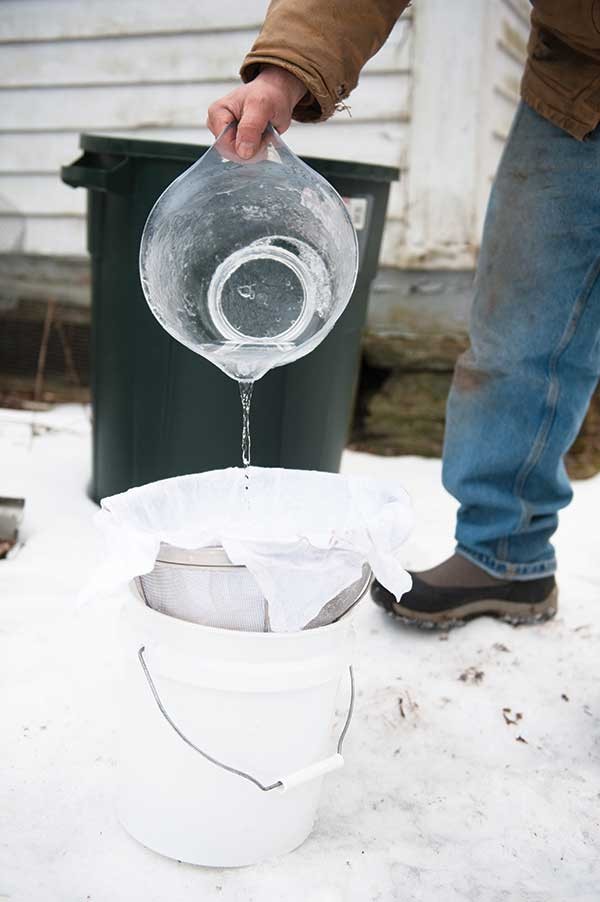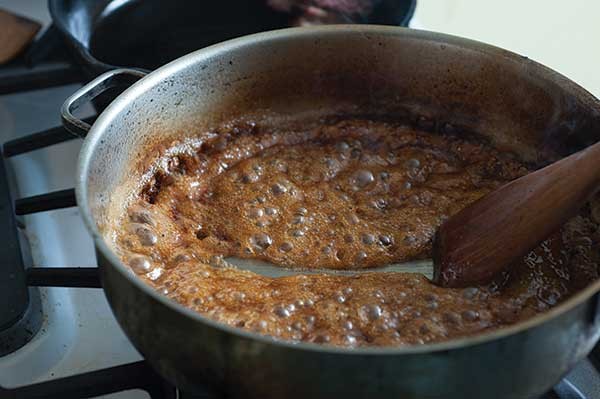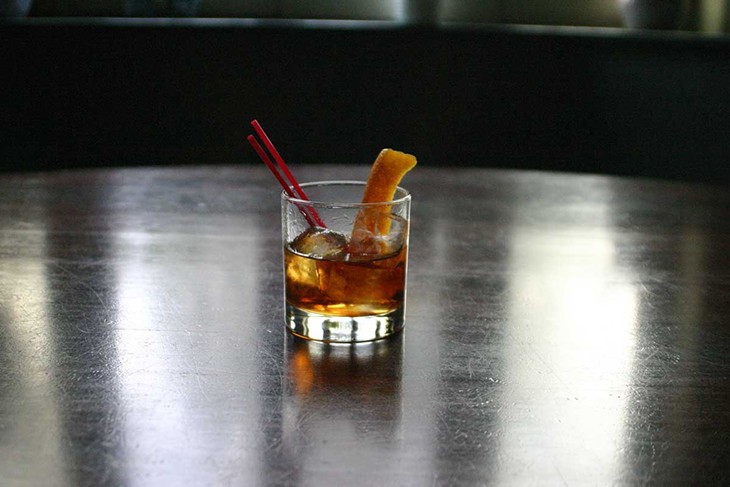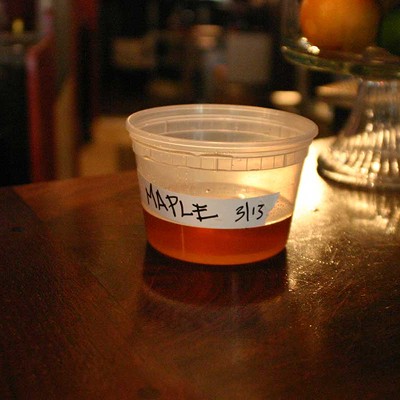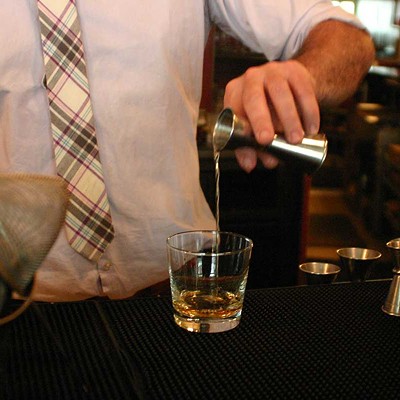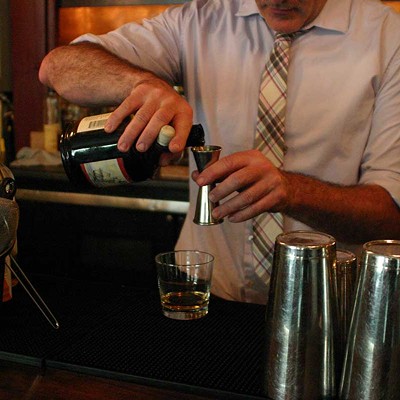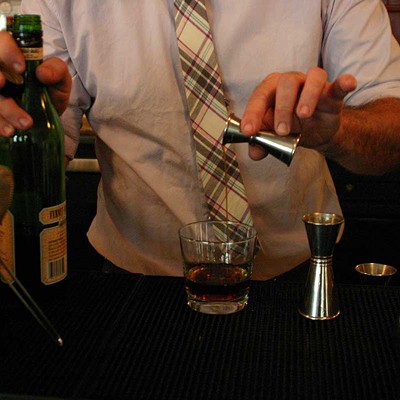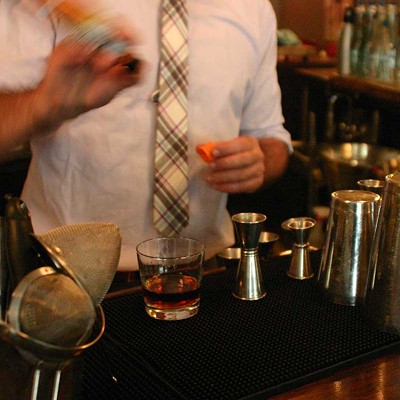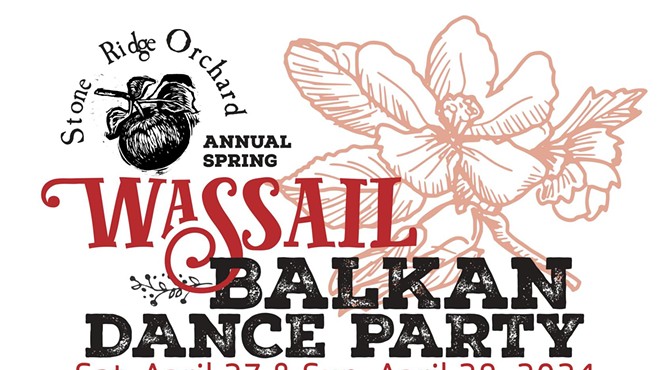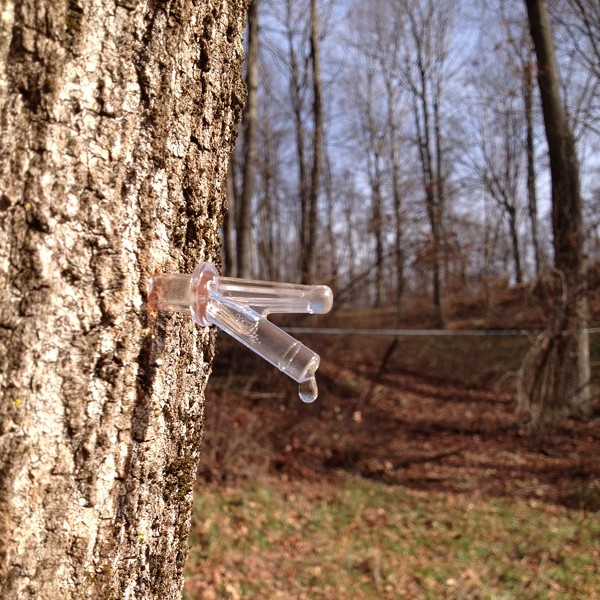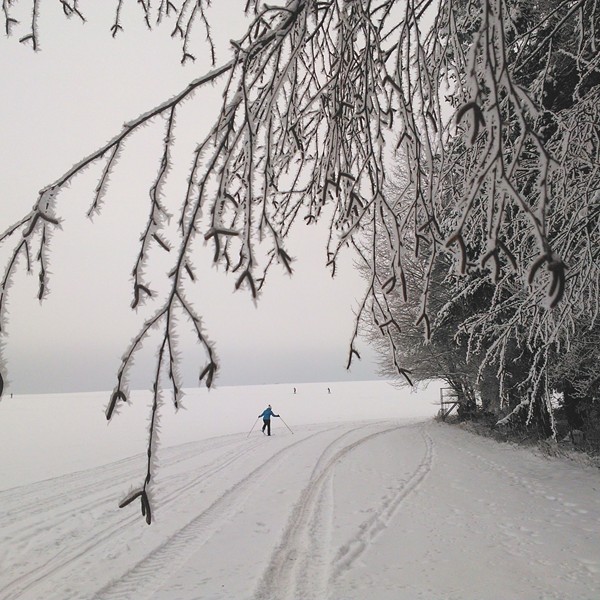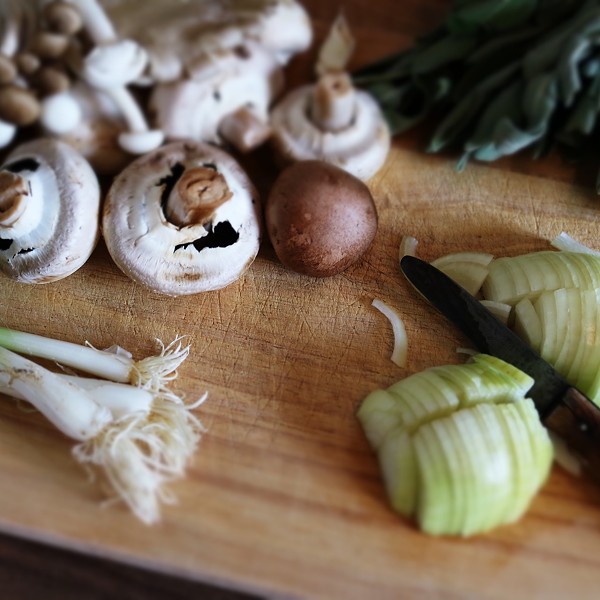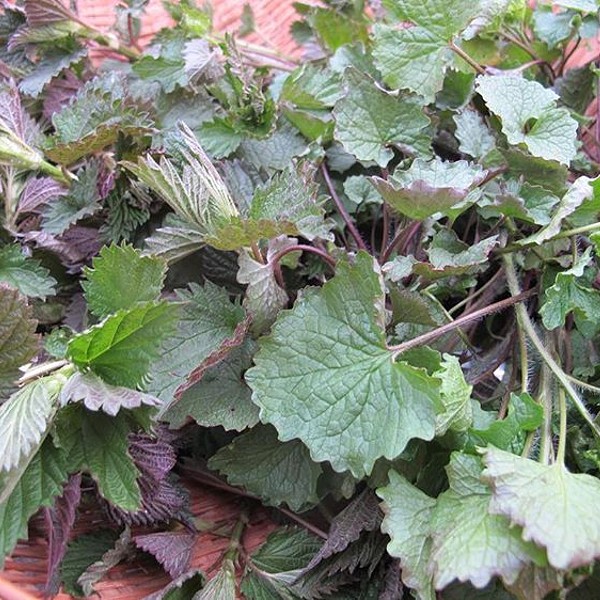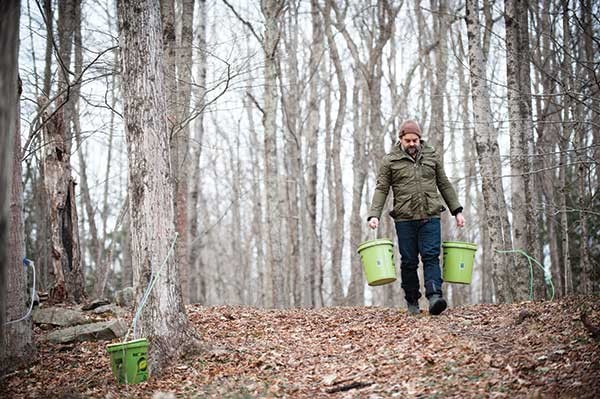
We're lucky. We live in a region that produces one of the most compelling sweeteners in the world. In the dark days of winter, unseen magic begins to stir deep inside our maple trees as sap moves stored sugars up from the roots to prepare for spring growth. After Vermont, New York produces the most maple syrup in this country (though Québec dominates the industry, producing 75 percent of the world's supply). We're all familiar with syrup, of course, but as with so many foods there is some real satisfaction to be had by chasing the stuff all the way up the supply chain—in this case, to the trees themselves.
Even if you have only one maple in your yard, like your faithful correspondent does, if it is of sufficient girth it can produce a startling amount of sap: two five-gallon buckets a day when the weather is right. Those 10 gallons of sap will yield a quart of syrup, since the reduction ratio is 40 to 1. Not a lot, maybe, but that's just one day. If you have kids, there's nothing more fun than teaching them the alchemy of sap. And it can become a lot more than just pancake syrup; it is very much worth exploring as an ingredient in and of itself.
Below-freezing nights and above-freezing days mark the beginning of sap season. Straight from the tree, it's water-clear, but containing between 2 and 5 percent sugar and other compounds that give it that inimitable flavor, in addition to minerals and amino acids. It's a delightful cold beverage, like water with a little something extra: Nature's own smart water. I freeze plastic jugs of it in my chest freezer to add thermal mass and so I can enjoy it on a hot day later in the year. (Try freezing sap into ice cubes and using them in cocktails.) If you have a seltzer maker, you could do worse than to carbonate some maple sap, either straight or cooked down a bit.
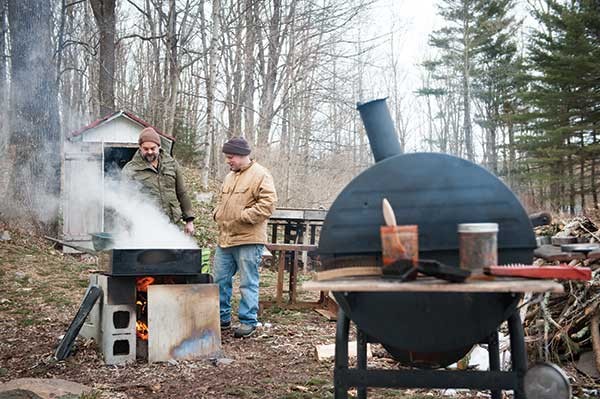
As it reduces, the color turns gold and the sweetness increases. Poured off into glasses, the sweet, steaming sap is the perfect a beverage for a cold March afternoon spent outside skimming and stoking the fire. As the reduction continues, other possibilities present themselves. At about five to one, it's ideal for braising pork belly or fermenting into vinegar. As it approaches syrup, very sweet but not yet viscous, floral and vanilla flavors become prominent, suggesting all sorts of dessert applications.
Commercial syrup is generally finished at 66 degrees brix, meaning 66 percent sugar by weight. If you have a hydrometer, determining brix is easy. You can also use your eyes and tongue to pretty good effect: If it's dark and sweet, it's syrup, though if you plan on canning it it's a good idea to be sure of the brix. You can also determine the sugar content with a candy thermometer, since finished sap boils at 219˚F. Some care should be taken as you near the end, because as it thickens it can burn easily if left alone, especially in a pan with a large surface area. If you cook it past the syrup stage, it becomes caramel, and can yield chewy or hard candy (or even granulated sugar) depending on how far you take it.
A few years ago, my friend Danny Blume decided to tap some of the many maples on his property outside of Woodstock. The first year he cooked the sap down on his indoor woodstove, and it took days. Now he has a cinder-block stove built behind his house that neatly accommodates a large rectangular boiling pan. An average day's haul from the taps we put in this year is somewhere around 30 gallons, with the bulk coming from a few venerable trees at the forest's edge. Thirty-gallon trash barrels—sunk into the snow that lingers on the north side of his house to keep it fresh—store the surplus until there is time to boil. Since he works at home, this is pretty often; he wanders outside every 30 to 60 minutes to skim foam off the top and stick another couple of logs in the fire. Each year he adds a few more taps, and adds another day or two of boiling. "It's fun, the kids love it, and it's nice to get outside after a long winter."
It's important to use a stainless pan; last year Blume used a galvanized one and it ruined a full gallon of syrup—syrup, not sap—giving it an awful metallic taste. I have used a big speckleware enameled canning tub to good effect as well for smaller amounts. Your kitchen can get pretty steamy, and not a little sticky, depending on the quantity you make, but if you have a good vent hood it's very doable. I boiled some this year, for vinegar and candy, among other things, but mostly I helped Blume schlep sap and tended the buckets when he and his family were out of town in exchange for some of that sweet, sweet syrup. Besides that, though, the hauling and pouring and skimming get the heart beating, a welcome feeling for gardeners in winter. And shooting the shit, happy outside on a raw day, sipping hot sap, is its own reward.
Calling to give me an update, Blume recounts that our previous phone chat nearly ruined a batch. "I was about five seconds too late, and it started to burn." But he bottled it, and it tastes amazing, with a subtle note of burnt caramel. After several years, and having each batch come out differently, but always superb, he has reached one conclusion: "It's pretty hard to fuck up maple sap." Some of that extra-dark batch is likely destined to become caramel candy: boiled down even further, then mixed with heavy cream and rolled in cocoa or chopped nuts.
Herb Van Baren makes syrup for a living under the Oliverea Schoolhouse Maple label. It's the best syrup I've ever tasted, and I'm not alone in that opinion. It's rich, complex, and subtle. With about 4,000 taps spread across four sugar bushes, he averages about a thousand gallons of syrup each season, though it fluctuates dramatically depending on the weather. He uses vacuum pumps on his trees, which doubles the sap yield, and has a reverse osmosis machine (as do most commercial operations) that removes about 75 percent of the water before he begins boiling. Some companies remove more, but Van Baren feels that some flavors are lost without sufficient time spent over a wood fire in a traditional evaporator: "Boiling develops flavor," he says, especially in the case of a basic rig like Blume's, where tongues of smoke curl over the pan and impart their taste to the result. Van Baren is particularly excited about this year's batch. "It's mostly light amber, and it's got the maple, the vanilla, and the butter" flavors, with all three more pronounced and balanced than normal. Asked why his is so good, he credits geography. "It's the trees and the soil, the glacial till in the Catskills."
Van Baren still finds himself adding more taps each year, using buckets because he has no more tubing. "It's a sickness," he laughs, using the same word Blume does to describe the creeping increase in ambition that seems inevitably to attend the tapping of sap. For aspiring sugar makers, Van Baren counsels a hot fire, a hydrometer, and a proper syrup filter that removes the tiny particles known as maple sand. Thus far, Blume has made do with only the fire, and it's hard to argue with his admittedly unscientific results. It's pretty magical really, unlike any other agricultural process in this part of the world (birch syrup is also good, but the reduction ratio is closer to 100 to 1) and it's a completely renewable resource. Meantime, however, there are not a lot of DIY food projects that offer more reward: you drill holes in a tree and sugar pours out. There's gold in them thar hills.
This dish is a real treat, and features some of the best food our region has to offer in the last days of winter. Parsnips are best left in the ground until March, and then dug up as soon as the ground softens; in winter they convert their starches to sugar to keep from freezing. Your garden can thus offer you fabulous food before a single seed goes in the ground. I like to steam them over maple sap, them blend them smooth with the sap and a little cream. Push them through a sieve for an extra-velvety texture. Wild chives are probably growing around the edges of your yard, and they last all winter. They're one of my all-time favorite wild foods, and ubiquitous, unlike their cousin the ramp.







